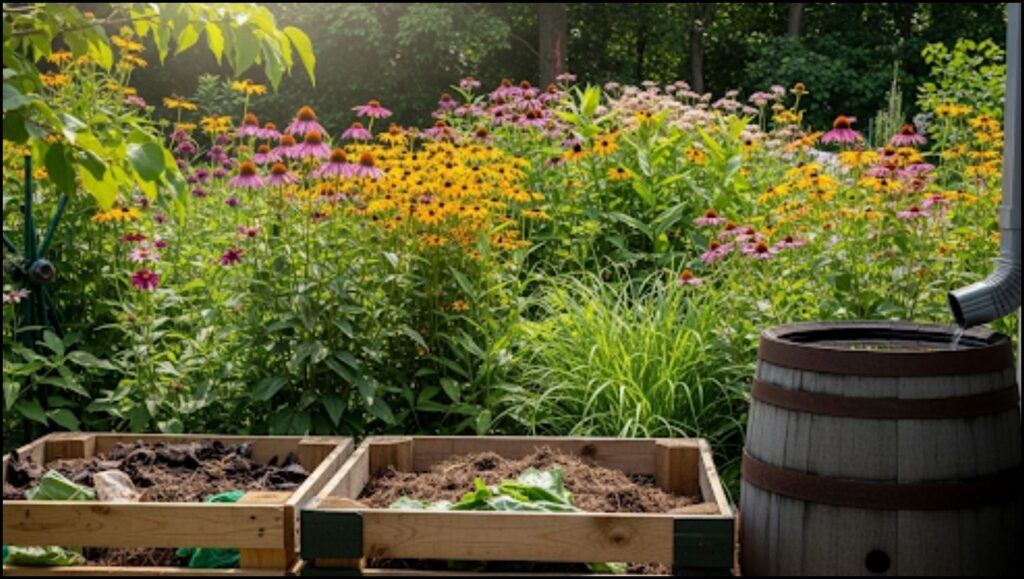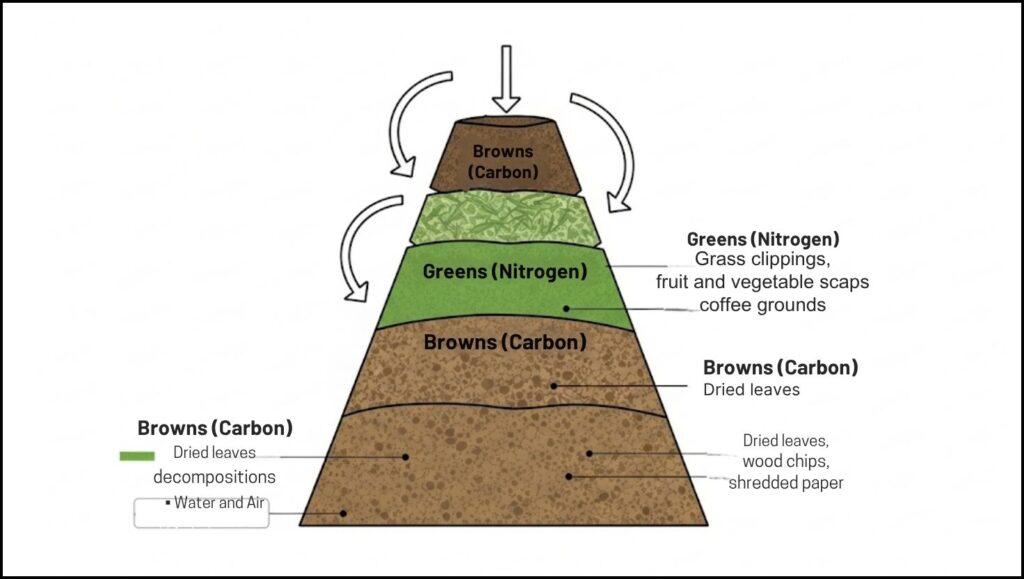
As households worldwide seek to reduce their environmental footprint and grocery bills, a growing movement is taking root in backyards and on balconies. The zero-waste garden aims to create a self-sustaining, closed-loop system where nothing is wasted and inputs from outside sources are minimized. By transforming kitchen scraps into rich soil and implementing smart resource management, gardeners are cultivating produce while reducing landfill contributions and conserving vital resources.
Key Principles of Zero-Waste Gardening
| Core Principle | Action | Rationale / Source |
| Nutrient Cycling | Actively compost all organic kitchen and yard waste. | Reduces landfill methane; creates free, nutrient-rich soil amendment. (U.S. Environmental Protection Agency) |
| Water Conservation | Install rain barrels and use drip irrigation. | Minimizes use of municipal water; delivers water directly to plant roots, reducing evaporation. (University of California Division of Agriculture) |
| Sustainable Sourcing | Prioritize native plants, open-pollinated seeds, and non-plastic planters. | Native plants require less water and support local wildlife; avoids single-use plastics. (National Audubon Society) |
| Natural Pest Control | Encourage beneficial insects and use physical barriers. | Eliminates the need for synthetic pesticides that can harm pollinators and soil health. (Cornell Cooperative Extension) |
The Foundation: Closing the Loop with Composting
At the heart of every zero-waste garden is the practice of composting. This process transforms organic waste—such as fruit and vegetable peels, coffee grounds, and yard trimmings—into a dark, nutrient-dense material called humus. This eliminates the need for synthetic fertilizers and diverts significant waste from landfills, where it would otherwise decompose and release methane, a potent greenhouse gas.
“Composting is the single most important activity for a sustainable garden,” said Joe Lamp’l, founder of the gardening media company joegardener®, in a recent publication. “You are literally turning what most people consider garbage into ‘black gold’ for your soil. It improves soil structure, aeration, and water retention.”
According to the U.S. Environmental Protection Agency (EPA), food scraps and yard waste currently constitute more than 30% of what we throw away. By composting, households can significantly reduce their waste stream while creating a superior soil amendment for free.
Getting Started with Composting
Success in composting hinges on balancing two types of materials: “greens” and “browns.”
- Greens: Nitrogen-rich materials like fresh grass clippings, vegetable scraps, and coffee grounds.
- Browns: Carbon-rich materials like dried leaves, cardboard, and small twigs.
A healthy compost pile generally requires a ratio of about three parts browns to one part greens. This balance provides the necessary elements for microorganisms to break down the organic matter efficiently without producing foul odors. Gardeners can use simple piles, enclosed bins, or worm-driven systems (vermicomposting) to suit their space and needs.

Sourcing Plants and Water Sustainably
A core tenet of the zero-waste garden is minimizing reliance on external, often unsustainable, inputs. This extends to the choice of plants and the management of water.
Choosing the Right Plants
Experts advise prioritizing native plants—those that have evolved within a specific region. “Native plants are adapted to the local climate and soil, meaning they typically require less water, no fertilizer, and are more resistant to local pests and diseases,” explains Dr. Douglas Tallamy, an entomologist at the University of Delaware and a leading advocate for native planting. Furthermore, they provide essential food and habitat for local pollinators and wildlife, strengthening the local ecosystem.
To avoid the plastic pots and trays common at commercial nurseries, zero-waste gardeners are reviving traditional techniques like making pots from newspaper or using soil blockers. Many also participate in community seed swaps or save seeds from their own harvests, which creates a more resilient and locally adapted stock of plants over time.
Smart Water Conservation
Water conservation is another critical pillar. Rather than relying solely on treated tap water, many gardeners install rain barrels to capture and store runoff from rooftops. According to the University of California Division of Agriculture and Natural Resources, a single 1,000-square-foot roof can harvest approximately 600 gallons of water from just one inch of rain. When irrigation is necessary, methods that deliver water directly to the plant’s roots are favored. Drip irrigation and soaker hoses are vastly more efficient than overhead sprinklers, which can lose up to 50% of their water to wind and evaporation.
Natural Pest and Weed Management
In line with its philosophy of avoiding external chemicals, the zero-waste garden relies on ecological balance for pest control. This involves creating a habitat that attracts beneficial insects—like ladybugs, lacewings, and hoverflies—that prey on common pests such as aphids. Planting a diversity of flowering species can help attract these helpful allies.
For weed control, the primary methods are manual removal and applying a thick layer of mulch. A layer of wood chips, straw, or compost not only suppresses weeds but also helps retain soil moisture and adds organic matter to the soil as it breaks down. These practices eliminate the need for chemical herbicides, which can contaminate soil and water. Looking forward, the principles of zero-waste gardening are expected to become increasingly mainstream as more people recognize the interconnectedness of waste reduction, food security, and environmental health. The movement demonstrates that a productive garden can also be a powerful tool for personal and ecological sustainability.
7 Colorful Shade-Loving Perennials to Brighten Up Your Garden Spaces
